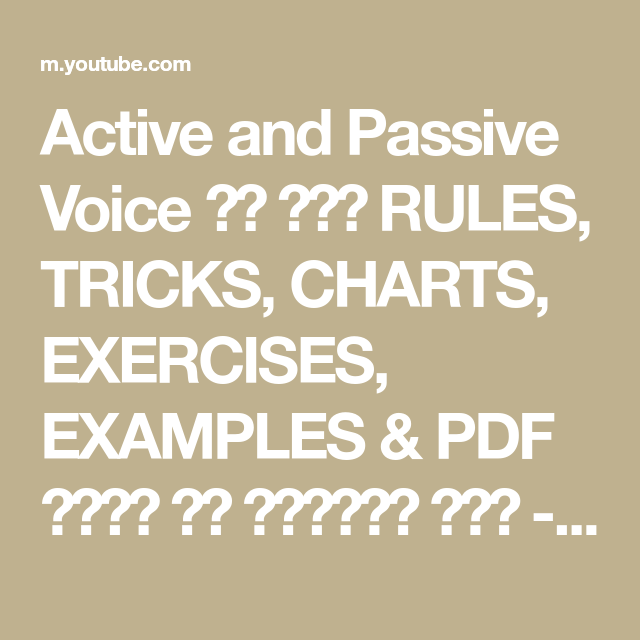In English grammar, active and passive voices are two different ways of constructing sentences. Understanding the difference between the two can help improve your writing and communication skills. By knowing some tricks and tips, you can easily identify and use active and passive voice effectively.
Active voice is when the subject of a sentence performs the action, while passive voice is when the subject receives the action. Both have their own uses and purposes in writing, so it’s important to know how to distinguish between them.
Active and Passive Voice Tricks
One trick to identify active voice is to look for the subject of the sentence and see if it is performing the action. For example, in the sentence “The cat chased the mouse,” the subject “cat” is performing the action of chasing. In passive voice, the subject is often preceded by the word “by” and the action is being done to the subject. For instance, in the sentence “The mouse was chased by the cat,” the subject “mouse” is receiving the action of being chased.
Another trick is to look for the use of helping verbs like “is,” “was,” “were,” “has been,” or “will be.” These are often indicators of passive voice. By replacing these helping verbs with active verbs, you can easily convert passive voice sentences into active voice. This simple change can make your writing more direct and engaging.
When choosing between active and passive voice, consider the emphasis you want to place on the subject or the action. Active voice is usually more straightforward and dynamic, making it great for clear and concise writing. On the other hand, passive voice can be useful when the focus is on the recipient of the action or when the subject is unknown or less important.
Practice is key to mastering active and passive voice. By writing and revising sentences using both voices, you can become more comfortable with when and how to use each effectively. Remember to vary your sentence structures and pay attention to the impact of your choices on the overall tone and clarity of your writing.
In conclusion, active and passive voice are important tools in writing that can help convey different meanings and nuances. By understanding the tricks and tips for identifying and using them, you can enhance the quality of your writing and effectively communicate your ideas to your audience.
